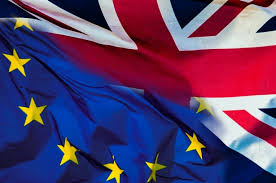 Brexit was triggered today, thus beginning the roughly two year process of the U.K. leaving the European Union. It is expected that the process will be final by Oct. 2018 with U.K. being free of Brussels by March 2019.
Brexit was triggered today, thus beginning the roughly two year process of the U.K. leaving the European Union. It is expected that the process will be final by Oct. 2018 with U.K. being free of Brussels by March 2019.
What does this mean for markets? For starts, it’s all about currency risk in client portfolios.
The pound (GBP 130,46 +1,19 +0,92%) was relatively quiet for the first few hours when Theresa May triggered Article 50. But market expectations are for the GBP to hit 1.30 to the dollar; it is now 1.24. If the market is right on the GBP, then investments in GBP priced assets may be getting pricey. The currency has been gaining fast since March 14 and it appears the market is ready to brace this new U.K.-E.U. relationship.
“Given the recent rally, it may be wise to take some profit off the table ahead of this event because despite being classified as a non-event, it is a historic event and bound to bring higher volatility over the coming few days,” says Naeem Aslam, chief market strategist for ThinkMarkets, a London broker.
The chief reason for the strength in the currency is the resilience of the economic data against the consensus view, and the rising inflation in the country which is keeping the Bank of England on its toes.
The euro is now the more risky of the two. Or make that three when you throw the dollar in there. With the euro now facing the biggest headwinds, money managers may want to consider buying euro-priced assets instead.
The pullback is an opportunity.
“The Eurozone is picking up, judging by recent data, including strong PMIs,” says Jan Dehn, head of research for the Ashmore Group in London. “France is likely to move further away from extreme nationalist populism following a victory for presidential candidate (Emmanuel) Macron over (Marine) Le Pen in the first presidential election debate.” A Le Pen win would crush the euro in the short term. Investors will know more about the euro’s direction next month.

